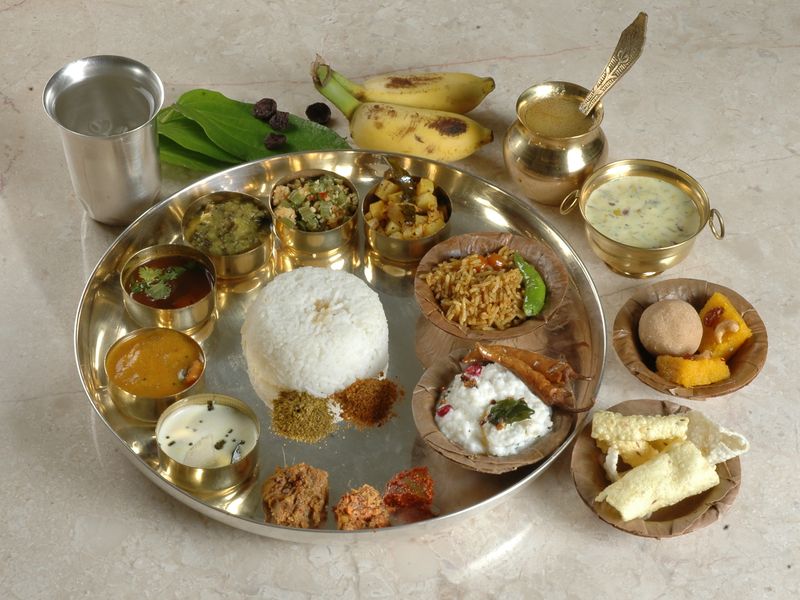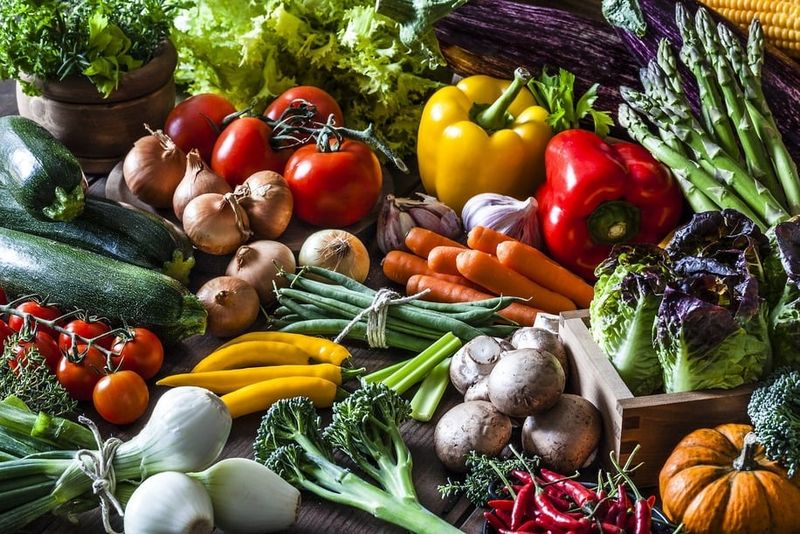6 So-Called Healthy Habits That Don’t Help And 10 Global Eating Practices Worth Adopting

Not all ‘healthy’ habits are as beneficial as they seem—some might even hold you back. On the flip side, many cultures around the world practice time-tested eating habits that promote balance, variety, and enjoyment. Here’s a look at 6 so-called healthy habits that don’t really help, plus 10 global eating practices that are truly worth adopting.
1. Drinking Diet Soda Instead of Regular

Ever reached for a diet soda thinking it’s the healthier choice? Despite being calorie-free, diet sodas are often linked to increased cravings. They may also disrupt gut health and hinder appetite regulation. The artificial sweeteners used in these drinks can sometimes confuse our body’s natural sugar processing mechanisms.
This leads to a continuous cycle of sugar cravings. Instead of feeling satisfied, you’re left wanting more. Interestingly, studies have shown that regular soda drinkers may have better appetite control than those who drink diet versions. So, next time, consider opting for water or unsweetened beverages.
Curious fact: Some researchers believe that drinking diet soda may also affect your brain’s reward centers, making you crave other high-calorie foods.
2. Avoiding All Fats

In the quest to lose weight, many have shunned all fats from their diets. But this isn’t the best approach. Our bodies need healthy fats, like those from avocados, nuts, and olive oil, for hormone balance and vitamin absorption. These fats also help in feeling full and satisfied.
Without them, you might experience constant hunger, leading to overeating. Furthermore, healthy fats are essential for brain health and can help reduce inflammation. Skipping these can deprive your body of necessary nutrients.
Fun fact: The Mediterranean diet, rich in these healthy fats, is often associated with longevity and heart health.
3. Counting Every Single Calorie

For some, calorie counting becomes a never-ending math problem, where every bite is scrutinized. While being aware of calorie intake is important, obsessing over it can lead to stress and disordered eating patterns.
It’s crucial to remember that the quality of food matters more than hitting a specific calorie number. Not all calories are created equal; 100 calories of fruits and vegetables provide more nutritional value than 100 calories of candy.
Over-fixation on calories can also overshadow other important aspects of food, like taste and enjoyment. Remember, food is meant to be savored, not stressed over.
4. Skipping Meals to ‘Save’ Calories

Skipping meals, especially breakfast or lunch, in an attempt to save calories might backfire. Metabolism slows down, and the body enters a conservation mode, holding onto fat reserves instead. This can also lead to intense hunger later in the day, causing overeating or binging during subsequent meals.
Additionally, skipping meals can result in blood sugar crashes, making you feel fatigued and irritable. It’s more beneficial to have balanced meals throughout the day to keep your energy levels stable.
Did you know? Regular meal patterns are associated with improved metabolic health and even better cognitive performance.
5. Always Choosing Low-Fat Packaged Foods

Walking down the grocery aisle, you might be tempted by the allure of ‘low-fat’ labels. However, these products often compensate for the lack of fat with added sugars or sodium. This makes them ultra-processed and less satisfying than their full-fat counterparts.
Consuming such foods can lead to increased hunger shortly after eating. Moreover, fats play a critical role in nutrient absorption, especially fat-soluble vitamins like A, D, E, and K.
Interesting tidbit: Some low-fat yogurts have as much sugar as a candy bar! It’s a reminder to always check the labels and prioritize whole, natural foods.
6. Drinking Juice Instead of Eating Fruit

Juice might seem like a convenient way to get your daily fruit intake, but it comes with its downsides. Unlike whole fruits, juices are devoid of fiber, which plays a crucial role in digestion and keeping you full. The absence of fiber means that juices can spike blood sugar levels rapidly, leading to energy crashes later.
Whole fruits, on the other hand, provide a slow and steady release of energy, thanks to the fiber content. They also contain more nutrients compared to their juiced counterparts.
Quirky fact: Eating an apple provides four times more fiber than drinking apple juice!
7. Mindful Eating (Japan)

In Japan, meals are more than just about feeding the body; they nurture the soul. Meals are consumed slowly and with intention, fostering a deep appreciation for food. This practice aids digestion and encourages portion control naturally.
By savoring each bite, individuals are more attuned to their body’s hunger and satiety signals. This can prevent overeating and promote better digestion. Mindful eating also emphasizes the importance of enjoying meals without distractions like TV or phones.
Did you know? The concept of ‘hara hachi bu’ encourages eating until you’re 80% full, promoting longevity and health.
8. Plant-Forward Meals (Mediterranean)

The Mediterranean diet is celebrated worldwide for its health benefits. Central to this is the plant-forward approach, where meals revolve around vegetables, legumes, and whole grains. Healthy fats, such as those from olive oil, complement these meals.
Meat takes a backseat, often serving as a side dish rather than the main focus. This balance ensures a variety of nutrients and antioxidants, promoting heart health and reducing the risk of chronic diseases.
Fun fact: Mediterranean populations, particularly from regions like Crete, often boast longer lifespans and lower rates of heart disease.
9. Fermented Foods (Korea & Eastern Europe)

Fermentation is an ancient method of preserving food, but it offers more than just longevity to edibles. Foods like kimchi, sauerkraut, and kefir are rich in probiotics, which promote a healthy gut microbiome. A balanced gut can enhance digestion, boost the immune system, and even improve mental health.
In Korea, kimchi is a staple, while Eastern Europeans favor sauerkraut. These foods not only add a tangy flavor to meals but also introduce beneficial bacteria into the diet.
Quirky tidbit: The average Korean consumes around 40 pounds of kimchi per year!
10. Portion Control (France)

The French art of eating is about quality over quantity. Meals, though rich, are served in smaller portions, allowing diners to savor each bite without overindulgence. This approach emphasizes balance, with meals comprising a variety of foods, including rich cheeses and wines, but consumed in moderation.
The focus is on enjoying the dining experience, rather than rushing through it. This slower pace can lead to better digestion and increased satisfaction.
Fun fact: Despite their love for high-calorie foods, the French have one of the lowest obesity rates in the developed world.
11. Eating Together (Italy, Spain, Latin America)

In many cultures, meals are a communal affair, bringing families and friends together. This tradition fosters bonds, creating a sense of community and belonging. Eating together encourages slower consumption, as conversations take precedence, allowing for better digestion.
This practice also promotes mindful eating, where individuals are more aware of their hunger and fullness cues, reducing the tendency to overeat. In Italy, Spain, and Latin America, shared meals are a cherished tradition.
Did you know? Studies show that families who eat together regularly tend to have healthier dietary habits and stronger familial relationships.
12. Midday Main Meals (Mexico, Greece, India)

In countries like Mexico, Greece, and India, lunch is often the main meal of the day. This tradition allows the body ample time to digest and utilize energy throughout the afternoon. Consuming the largest meal midday can lead to improved energy levels and better sleep patterns.
It aligns with our natural circadian rhythms, optimizing digestion and nutrient absorption. This practice contrasts with the Western habit of having a heavy dinner, which can disrupt sleep and digestion.
Fun fact: In Mexico, the ‘comida’ or main meal can last for hours, complete with multiple courses and socializing.
13. Using Herbs and Spices Instead of Salt (India, Middle East)

In regions like India and the Middle East, culinary traditions embrace the use of herbs and spices to enhance flavor. Turmeric, cumin, coriander, and others offer vibrant tastes without the need for excessive salt.
This not only boosts flavor complexity but also provides additional health benefits, from anti-inflammatory properties to improved digestion. Reducing salt intake can lower blood pressure and reduce the risk of heart disease.
Did you know? Turmeric, a staple in Indian cuisine, is renowned for its anti-inflammatory and antioxidant properties, contributing to overall wellness.
14. Drinking Herbal Teas After Meals (China, Morocco)

In China and Morocco, it’s customary to conclude meals with a soothing cup of herbal tea. Varieties like peppermint, ginger, and pu-erh not only aid digestion but also offer a calming ritual to wind down post-meal.
These teas are known for their digestive health benefits, helping to soothe the stomach and enhance nutrient absorption. The practice of drinking tea is also a moment of relaxation, promoting mindfulness and stress reduction.
Fun fact: In Morocco, mint tea is often referred to as ‘Moroccan whiskey’ due to its popularity and cultural significance.
15. Including Bitters or Sour Foods (Thailand, Ethiopia)

Balanced flavors are central to Thai and Ethiopian cuisines. Meals often incorporate a mix of sweet, salty, sour, and bitter, helping regulate appetite and stimulate digestion. Sour foods, like lime or tamarind in Thailand, enhance the complexity of dishes, making them more satisfying.
Bitters, such as fenugreek or bitter gourd, are known to aid digestion and detoxification. This balance of flavors can prevent palate fatigue and increase meal enjoyment.
Quirky fact: In Ethiopia, the traditional dish ‘injera’ is made from teff flour, giving it a unique sour taste that complements spicy stews.
16. Eating Seasonally and Locally (Nordic, Japanese)

Many traditional diets, like those in Nordic countries and Japan, emphasize eating what’s in season and locally sourced. This practice ensures the consumption of foods at their peak nutritional value and flavor. Eating seasonally also supports local farmers and reduces the carbon footprint.
Fresh, in-season produce tends to be more flavorful and nutrient-rich. This approach promotes a varied diet, reducing reliance on processed foods.
Did you know? In Japan, the concept of ‘shun’ refers to the peak season of a food, when it is most delicious and abundant.
